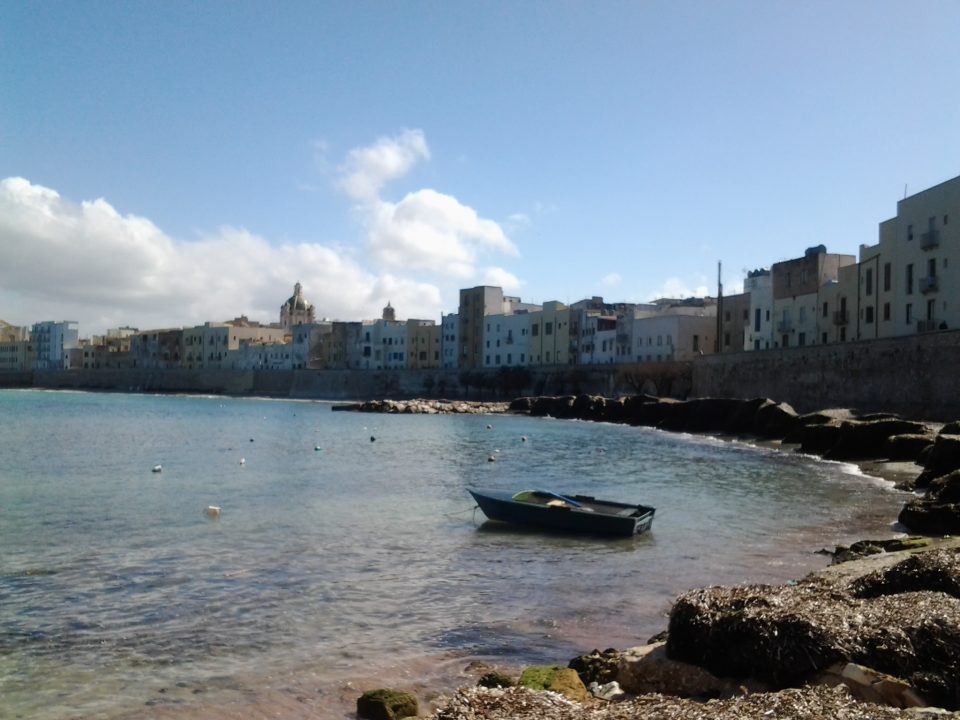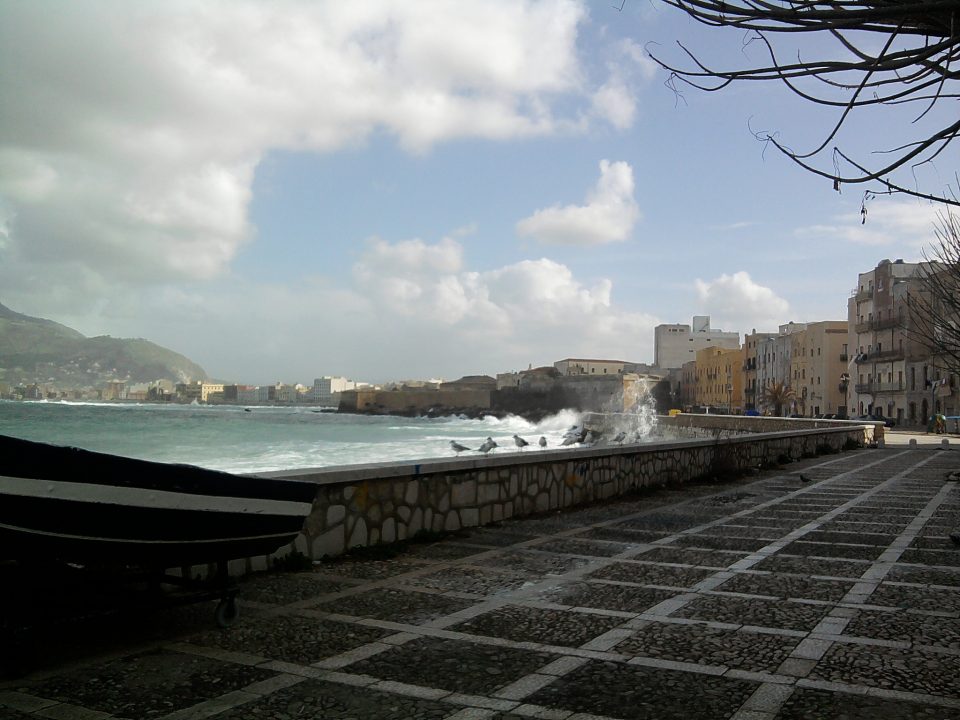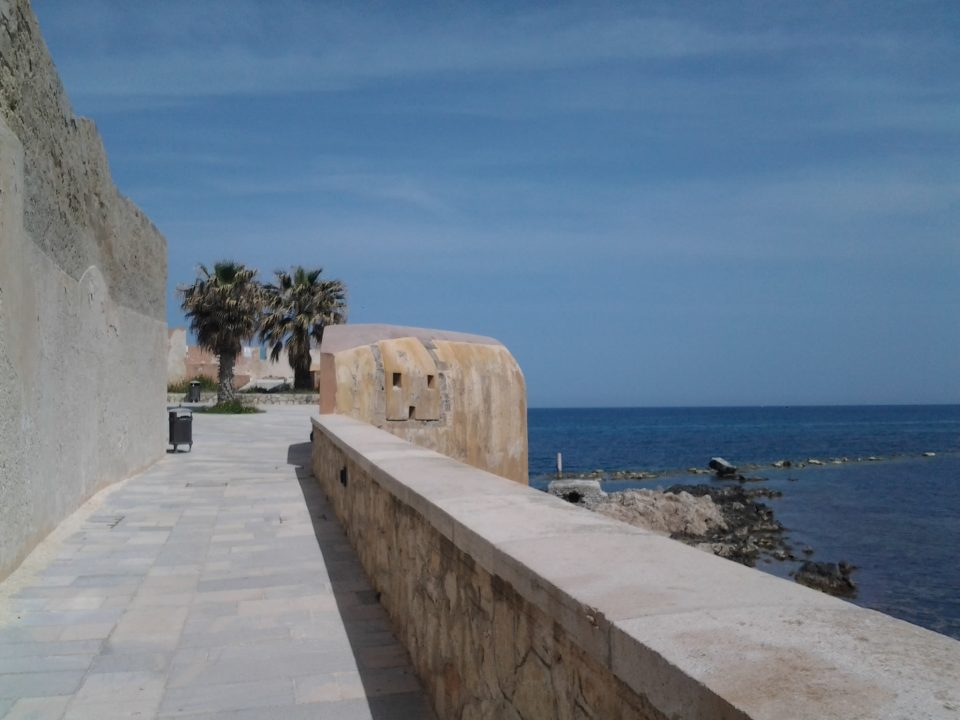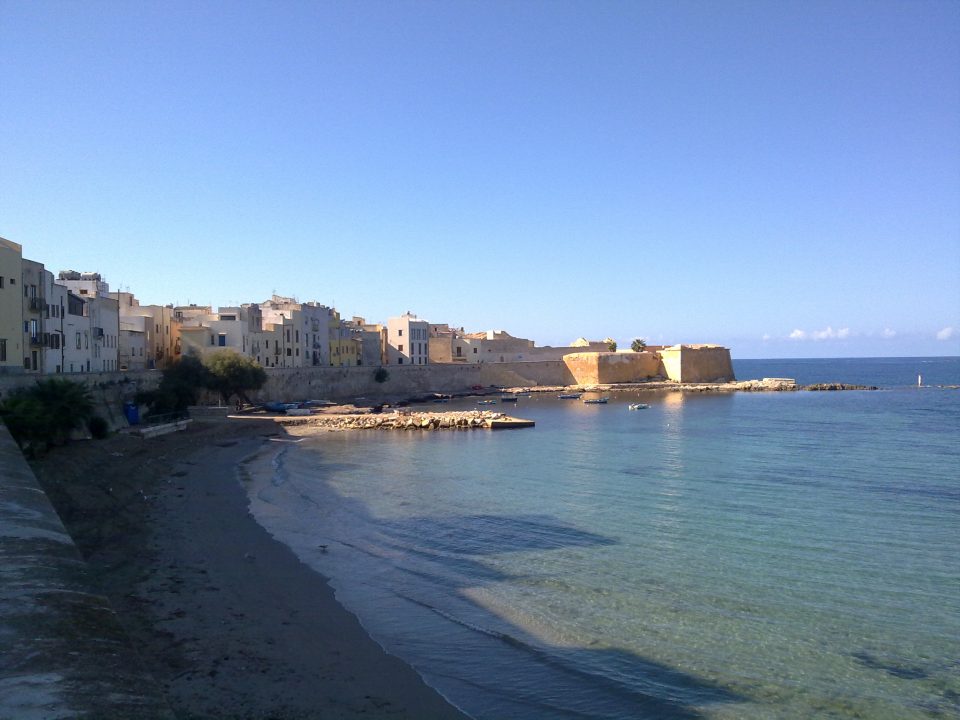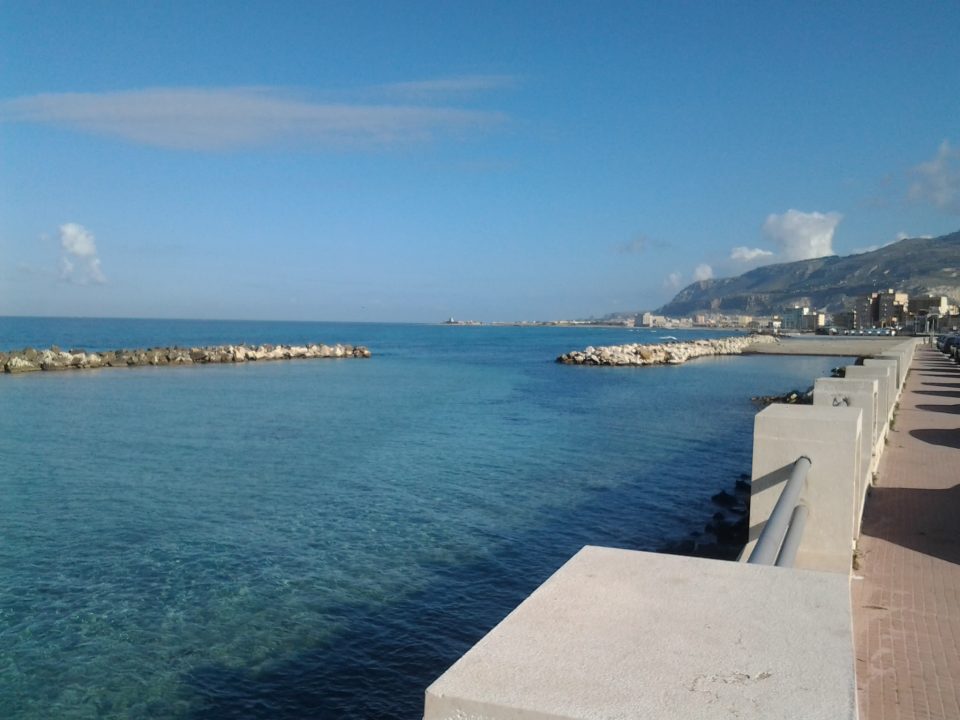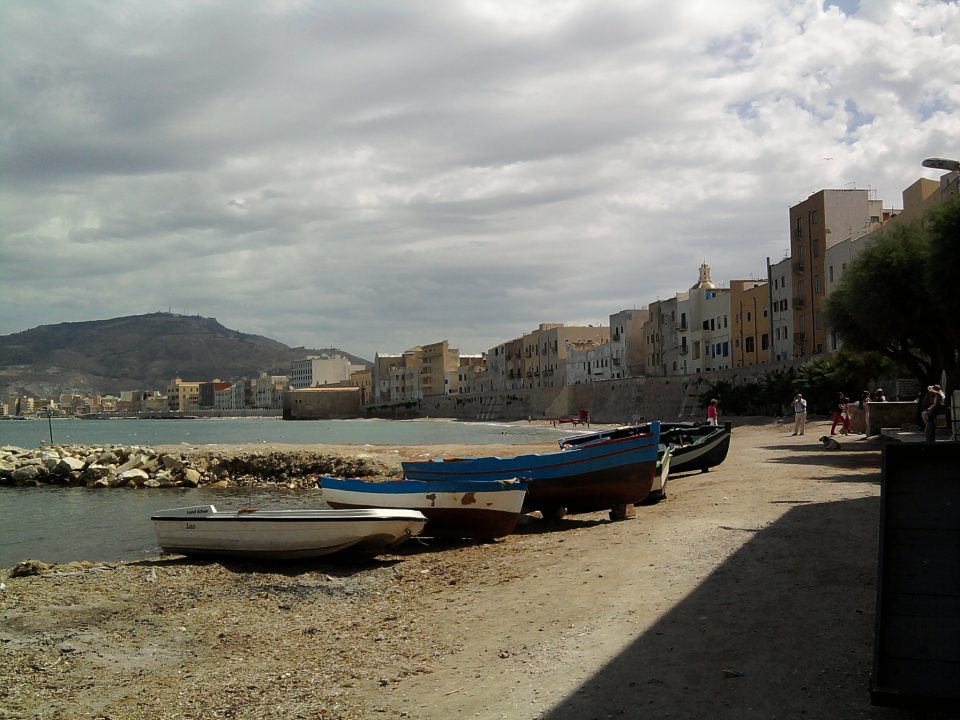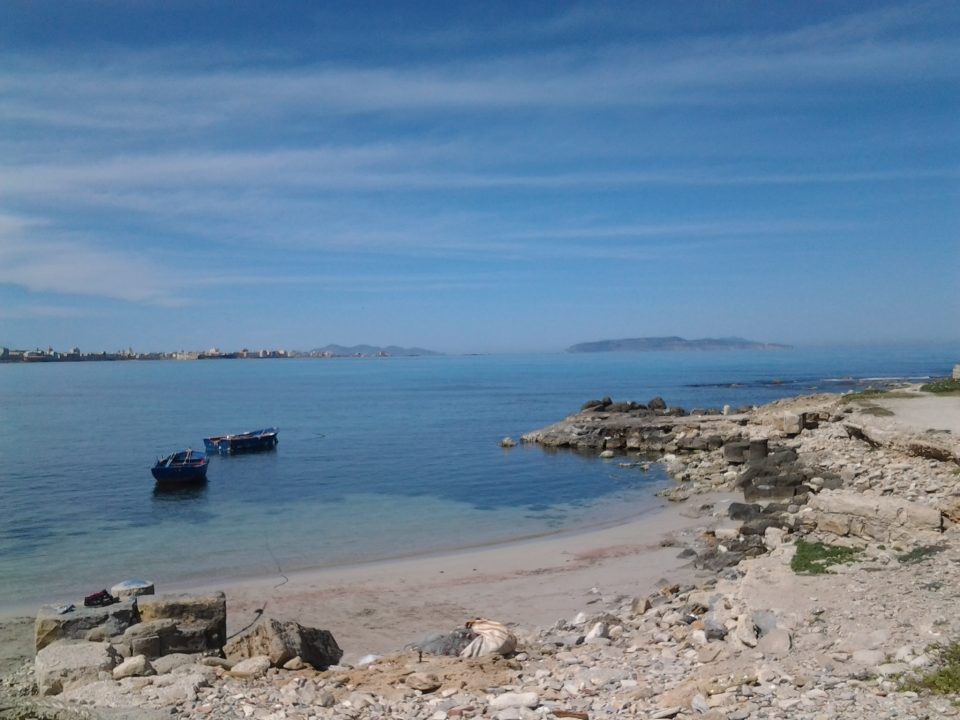The road along the coast
Driving the road along the coast called via Dante Alighieri we want to stop to watch the amazing landscape. Stright on towards west this road seems to lead to Ligny Tower but this is not totally true.
First of all Ligny Tower is the extreme western tip of Sicily and junction point between two seas, the Tyrrhenian Sea to the east and the Mediterranean to the west. We decide to reach it, but as we are by car we need to go to the port and from there we will get the place.
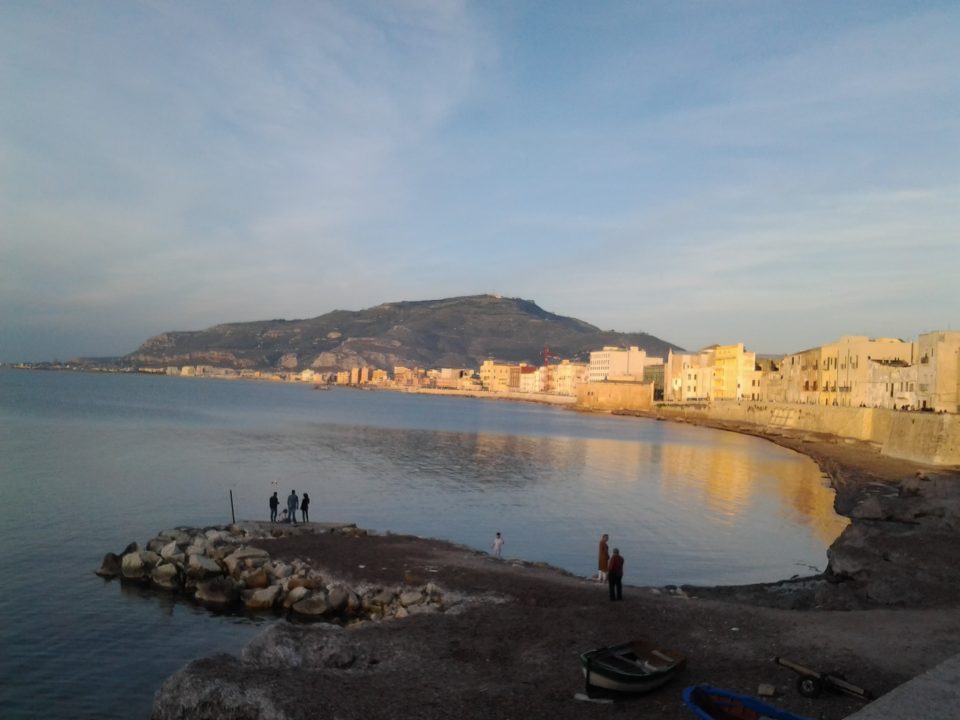
Ligny Tower
The road along the coast ideally ends at Ligny Tower. This is a charming place. It is very windy and the sea is often rough, but the sight is remarkable. From here you can admire the whole bay of Trapani. You can understand why ancient Greeks gave this city the name Drepanon, meaning “sickle-shaped”.The majestic Mount San Giuliano overlooks the gulf.
The view from Ligny Tower
From Ligny Tower, among other things fascinating venue for musical events, you can appreciate the view of Trapani: the Mura di tramontana, the ancient walls, restored a few years ago; the charming fishers small houses, now used mostly as holiday house or apartments for lucky tourists.
Lucky because it must be wonderful waking up early in the morning, looking out the window to enjoy the sight of sea. This is amazing in all its moments, when it is calm or rough. Or when the city still sleeps I would love to read a book sipping a cofee, delighted by light, smell of sea and wind.
Largo delle sirene
Left Torre di Ligny, in order to reach the road on the walls we need to go first to Largo delle Sirene. We are walking along the sea, a paved road which starts from a small lovely church, San Liberale.
It looks like a real terrace over the sea. Children play football and adults chat each other while enjoying coolness and landscape.
In this square it is possible to see a kind of old castle, the starting point of the ancient city walls. It is called Bastione Imperiale and is still waiting for the end of its restoration.
It is not possible to access the road on the walls from here, so we need to get back to the busy road. Arrived at Porta Ossuna in via Botteghelle we can climb a star to reach the walk on the walls.
Mura di Tramontana
The road on the walls, or Mura di Tramontana goes for about one kilometer from the Bastione Conca to the former fish market’s square.
These were part of the perimeter fortification of the ancient city, built during the Spanish domination in the sixteenth century.
The place had been abandoned for decades and has been restored for citizenship a few years ago with an incredible work. Also the nice beach has been cleaned. Inapproachable until a few years ago for the deposited dead algae and the garbage, a large part of the coast has been recovered, up to San Giuliano beach belonging to Erice.
Porta Ossuna beach
The beach is accessible from the centre of town through Porta Ossuna, one of Trapani’s ancient doors. It is also accessible from two stairs going down from the walls.
The boundaries between Trapani and Erice
Question of the redefinition of administrative boundaries between Trapani and the close town of Erice is a long time problem. A disorganized buildings development of the city after the war turned to the east, in the area of Erice. People from Trapani have always lived in the populous districts belonging to the town of Erice, such as San Giuliano, Trentapiedi and Raganzili. They are as integral part of the city of Trapani, but are not the same municipality. This causes inefficiencies related to competence problems (urban transport, sanitation, water supply, road maintenance).
Furthermore there is the strange condition for which in Trapani there are no births from the sixties. The new city hospital was built in the town of Erice. Consequently this distorts the official demographic data about the city of Trapani because they do not consider the actual size of Trapani population. Politicians have been discussing about redefinition of the borders with the town of Erice for decades.
Plans to reconfigure the coast
Paolo Portoghesi, one of the most important Italian architects, has performed a feasibility plan for the development of Trapani’s north coast. The feasibility plan, submitted in 2000, provides for the reconfiguration of the entire coastal.
As a result the plan provide an enlargement of the beach, with the technique of artificial beach nourishment; a long and comfortable pedestrian path, which can also accommodate services and facilities. I hope so much in a long bike path.
Theater, hotels, car parks, restaurants, sports equipment will fill the empty spaces aside the road along the coast. Trapani could become the Barcelona of the future.
In the old town, Cala Mancina small port, built in the seventeenth century, will be restored. In particular, it will become a small touristic port, with the least environmental impact. It will be provided with small removable pontoons, which will allow the mooring of pleasure boats. This will restore the historical identity of the place and enrich it with commercial activity.
Tonnara San Giuliano
According to Portoghese’s plan, an international tourist attraction with cultural facilities will arise in the crumbling building of St.Julian’s tuna fishery at Punta Tipa .
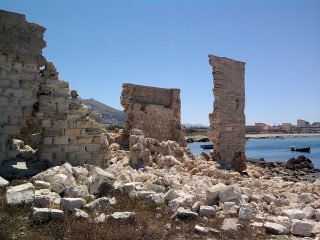 Fishing in Trapani has a long tradition, especially tuna fishing.The classical technique of slaughter in the various traps located around the city was popular. The tuna-fishery were San Giuliano, San Cusumano, Formica Island. Then, there were tuna fishing in Favignana, Bonagia, San Vito Lo Capo, Scopello, Capo Granitola. Hence the historical and cultural importance of the ancient St.Julian tuna fishery, placed on the strip of land called Punta Tipa.
Fishing in Trapani has a long tradition, especially tuna fishing.The classical technique of slaughter in the various traps located around the city was popular. The tuna-fishery were San Giuliano, San Cusumano, Formica Island. Then, there were tuna fishing in Favignana, Bonagia, San Vito Lo Capo, Scopello, Capo Granitola. Hence the historical and cultural importance of the ancient St.Julian tuna fishery, placed on the strip of land called Punta Tipa.
Thus Tonnara (Tuna Fishery) di San Giuliano is commonly known as “Tonnara Tipa”.
In the past it belonged to the city of Erice, currently to Trapani. It has been the first tuna fishery in the western Sicily, even before the one in Favignana. The Fardella Counts owned it and later sold it to the Princes Borghese from Rome.
At the beginning of nineteenth century the property passed to Serraino family from Trapani; to expand their trade in fish products they rented the property to the businessman Vito Tipa from Trapani. He used it as a cannery of fish products such as canned tuna in olive oil, tuna sausage, tuna egg.
They exported their products all over the country from 1945 to 1973. Inside the property large rooms surrounded a courtyard. In the first floor there were rooms for workers and a church. In front of the building there was a small port that facilitated transport of big tuna.
Works to redevelop Punta Tipa
Finally works for redevelopment Punta Tipa to a city park began in 2011. Restoring the entire area of Punta Tipa, such as the former tuna fishery, the beach and the park, requires a considerable effort of financial resources. Tonnara San Giuliano will be a building with conference room, diving center, a marina, dock for small boats or rafts for tours. A museum will keep the tools used by fishermen until 1973, when the tuna fishery was still working.
It is a long work but it will be done. Every year the area is better and better and cleaner.
I must confess: It is my favourite beach in Trapani.
source:
http://trapaniedintorni.altervista.org
Foto: Maria Virzì

